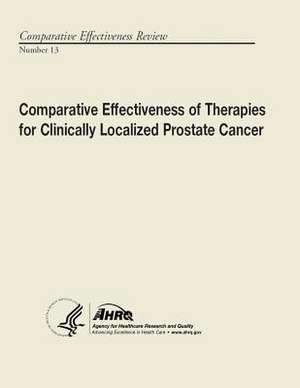Comparative Effectiveness of Therapies for Clinically Localized Prostate Cancer
Autor U. S. Department of Heal Human Services, Agency for Healthcare Resea And Qualityen Limba Engleză Paperback
Preț: 148.89 lei
Preț vechi: 156.72 lei
-5% Nou
Puncte Express: 223
Preț estimativ în valută:
28.49€ • 29.39$ • 23.78£
28.49€ • 29.39$ • 23.78£
Carte disponibilă
Livrare economică 05-19 martie
Preluare comenzi: 021 569.72.76
Specificații
ISBN-13: 9781490543284
ISBN-10: 1490543287
Pagini: 188
Dimensiuni: 216 x 280 x 10 mm
Greutate: 0.45 kg
Editura: CREATESPACE
ISBN-10: 1490543287
Pagini: 188
Dimensiuni: 216 x 280 x 10 mm
Greutate: 0.45 kg
Editura: CREATESPACE
